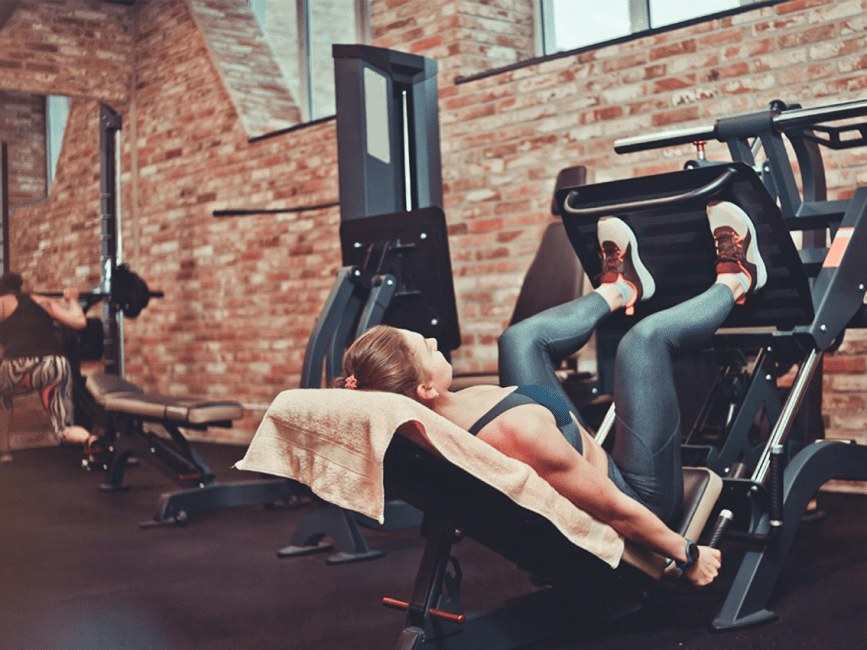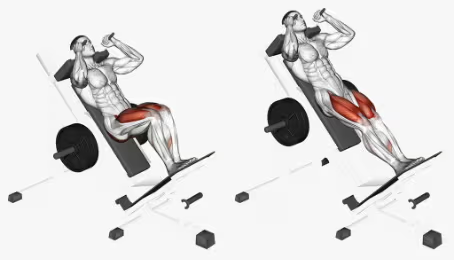Today we delve into the world of leg workouts at the gym, where the foundation of strength and stability is built.
Your legs are the pillars of your body, supporting you in every movement. Leg workouts not only enhance your lower body aesthetics but also play a crucial role in overall strength, balance, and functional fitness.
Key Exercises for Effective Leg Workouts
1. Squats:
1. Benefits: Squats are a fundamental compound movement engaging multiple muscle groups, including quadriceps, hamstrings, glutes, and lower back.
2. Technique: Stand with feet shoulder-width apart, lower hips as if sitting back into a chair, and return to the standing position. Ensure your knees don’t go beyond your toes.
2. Deadlifts:
1. Benefits: Deadlifts target hamstrings, glutes, and lower back, fostering strength and stability.
2. Technique: Hinge at your hips, keep your back straight, and lift the barbell or dumbbells from the ground. Control the descent to fully engage your muscles.
3. Lunges:
1. Benefits: Lunges work on each leg independently, enhancing balance and targeting quadriceps, hamstrings, and glutes.
2. Technique: Step forward or backward, lower your body until both knees are bent at a 90-degree angle. Push back up to the starting position.
4. Leg Press:
1. Benefits: Leg press isolates leg muscles with less stress on the lower back, making it suitable for various fitness levels.
2. Technique: Push the platform away using your legs, extending your knees without locking them. Control the descent for optimal muscle engagement.
5. Calf Raises:
1. Benefits: Calf muscles contribute to overall leg definition and aid in ankle stability.
2. Technique: Stand on a raised surface, lift your heels by pushing through the balls of your feet, then lower them below the level of the platform.
Sample Leg Workout Routine
1. Warm-up:
1. 5-10 minutes of light cardio (treadmill, cycling) to increase blood flow to your muscles.
2. Compound Exercises (3 sets each):
1. Squats: 12 reps
2. Deadlifts: 10 reps
3. Isolation Exercises (3 sets each):
1. Lunges: 12 reps per leg
2. Leg Press: 15 reps
4. Accessory Exercise (2 sets):
1. Calf Raises: 20 reps
Tips for an Effective Leg Workout
1. Maintain Proper Form: Form is paramount. Ensure proper technique to prevent injuries and maximize muscle engagement.
2. Progressive Overload: Gradually increase weights to challenge your muscles for continuous growth.
3. Rest and Recovery: Allow sufficient time for muscle recovery. Aim for 48 hours before targeting the same muscle group again.
4. Mix Up Your Routine: Introduce variety to prevent plateaus and keep your workouts interesting.
5. Common Mistakes to Avoid: Ignoring Warm-up: Skipping warm-up increases the risk of injury. Warm-up adequately to prepare your muscles and joints for the intense workout ahead.
6. Incomplete Range of Motion: Ensure your exercises cover the full range of motion. This helps activate the target muscles effectively and prevents imbalances.
7. Neglecting Calf Muscles: Calf muscles often get overlooked. Include calf exercises to achieve a well-rounded lower body development.
8. Overtraining: Allow your muscles to recover. Overtraining can hinder progress and lead to burnout or injuries.
9. Poor Nutrition: A balanced diet is crucial for muscle growth and recovery. Ensure you’re consuming enough protein and nutrients to support your leg workouts.
Read Also DIY Air Conditioner: Beating the Heat on a Budget
Advanced Techniques for Intensity

1. Drop Sets: Perform an exercise until failure, then reduce the weight and continue. This intensifies the workout, stimulating muscle growth.
2. Supersets: Combine two exercises without rest between them. Supersets enhance the workout’s efficiency and increase calorie burn.
3. Time Under Tension (TUT): Control the speed of each repetition, focusing on both the concentric and eccentric phases. This increases muscle activation and promotes hypertrophy.
4. Plyometrics: Integrate explosive movements like box jumps or jump squats to enhance power and agility.
Tailoring the Routine to Your Goals
1. For Strength: Focus on heavy weights and lower rep ranges (4-6 reps) with longer rest intervals.
2. For Hypertrophy (Muscle Growth): Opt for moderate weights and moderate rep ranges (8-12 reps) with shorter rest intervals.
3. For Endurance: Choose lighter weights and higher rep ranges (15+ reps) with minimal rest between sets.
Recovery and Maintenance
1. Cool Down: After your leg workout, spend 5-10 minutes cooling down with light cardio and static stretches. This helps reduce muscle soreness and improves flexibility.
2. Foam Rolling: Incorporate foam rolling into your post-workout routine to release muscle tension and enhance recovery.
3. Hydration and Nutrition: Drink plenty of water to stay hydrated, and consume a balanced post-workout meal rich in protein and carbohydrates to support muscle repair.
4. Rest Days: Allow your body adequate time to recover. Overtraining can lead to fatigue and increased risk of injury.
Addressing Common Concerns
1. Knee Health: If you have concerns about your knees, focus on exercises with proper form and consider consulting a fitness professional or physical therapist for guidance.
2. Varicose Veins: If you have varicose veins, opt for exercises with lower impact, such as cycling or swimming, and avoid exercises that place excessive pressure on the veins.
Long-Term Progress and Adaptation
1. Periodization: Periodize your leg workouts by incorporating different phases such as strength, hypertrophy, and endurance. This prevents adaptation and keeps your progress consistent.
2. Regular Assessments: Periodically assess your strength and adjust your workout routine accordingly. This ensures that your workouts align with your evolving fitness goals.
Setting Realistic Goals
1. Short-Term Objectives: Set achievable short-term goals, like increasing weights or improving form. These milestones contribute to your overall progress.
2. Tracking Progress: Keep a workout journal or use fitness apps to track your exercises, weights, and repetitions. Tracking progress provides motivation and helps you identify areas for improvement.
Final Words of Encouragement
Embarking on a leg workout journey can be both challenging and rewarding. Consistency, dedication, and a well-structured routine are your allies in achieving your fitness goals.
As you navigate the world of leg workouts, remember that each step you take is a stride towards a healthier, stronger, and more resilient version of yourself. Enjoy the process, stay committed, and relish the positive changes your leg workouts bring to your body and well-being. Happy training!
